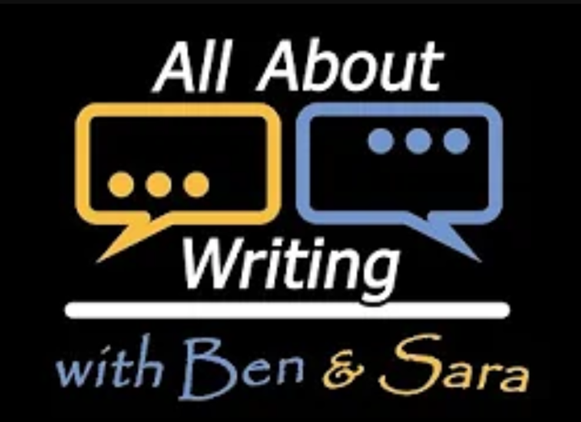How to Write a Compelling Book Introduction That Will Move the Needle
l
All Nonfiction books have a beginning (book introduction), a middle (body) and an end (conclusion). We’ve been taught at school that whenever we create a written essay, our goal must always be to “First tell them what we’re going to tell them, then tell them, and finally tell them what we told them.”
Because this is ingrained in our minds, many first-time entrepreneurial writers think that a book introduction is supposed to be just an advance read of their book, a prologue of sorts. The reality is that in the nonfiction genre second to your book cover the introduction is the most influential part of your book.
Learning how to write a book introduction the right way will determine whether your nonfiction book will live or die. Yes, your introduction is that critical for the success of your book!
Yes, your introduction is that critical for the success of your book.
Why?
Because it’s the place where you have to “hook” the reader into buying and reading your book. An attractive cover page and clever title will only get people as far along as picking up your book and opening it – in marketing parlance, this is how you get the lead. The introduction, however, is where you actually close the sale.
What’s the Purpose of The Introduction in a Book?
The purpose of the introduction is to be the “sales letter” for your book.
A successful sales letter that will close a lead needs to have a specific structure that guides your reader through a proper sales process to your desired result. In your case, it could be one of the following five outcomes:
- You want anyone who’s picked up your book in a store or clicked the Look Inside feature on Amazon to be moved to open their wallets and purchase your book.
- If you handed your book to a prospect as a calling card, then you want them to read your book and ultimately hire your services over your competitors’.
- If you handed the book to an event manager, you want to be booked for a paid speaking engagement (most event managers won’t read past your book introduction since they receive a large number of titles and don’t really have the time to read them).
- If you sent your book to a media outlet, you want to land an interview – segment producers don’t have time to read the multiple titles they receive either, so the sales letter contained in your book introduction is all you have to hook them.
- If you handed your book to a potential strategic partner, you want your calling card to develop into a strategic relationship.
Does the Book Introduction Come Before the Table of Contents?
The table of contents always comes first, because it’s part of the front matter of your book. The front matter includes sections like the Copyright Page, the Title Page, the Foreword and the Preface (we’ll talk about the latter two a bit further down). The introduction is considered part of your book’s body and is placed right before your first chapter.
Sometimes new authors think that the table of contents is what entices prospective readers, because they will often scan it as soon as they open your book in order to browse its contents.
While this behavior pattern is true, the table of contents is a very weak selling tool because it’s not a proper sales letter. That’s why you need to create an introduction that compels readers to buy your book.
How to Write an Effective Book Introduction?
It’s critical that your book introduction be 100% about your reader and 0% about you – we’ll discuss a little later where you can introduce your personal story and tell your readers about yourself.
Your introduction must clearly show how your book will help solve your reader’s problem in a unique way.
Before we get into how to craft a compelling introduction for your book, let’s clarify the key differences between an introduction, a preface and a foreword – three unique sections that have very defined roles in the marketing of your book.
What’s the Difference Between a Book Introduction, a Preface and a Foreword?
As stated above, the introduction is the sales letter for your book and it must always be centered on your reader and what your book will do for them (it must always answer their primary question: “What’s in it for me?”).
What Do You Write in a Preface?
The Preface, on the other hand, is all about you. Here you can share your personal story, the journey that has led you to write your book, what your book does (but not “how” it does it), why you are qualified to write this book and, if your book has been published before, that this is an updated edition and outlining what the changes are.
In short, the preface is the vehicle that you use to have an initial personal conversation with the readers to start building rapport.
A word of caution: Since you’ll be telling your reader about yourself, it’s imperative that you’re not perceived as “bragging” or being a shameless self-promoter.
This section is the place to tell your readers who you are in order to build rapport, not to impress them or be boastful about your accomplishments or credentials (however, you can mention a specific credential if it’s something you feel the reader needs to know).
Only include those pieces of personal information that are relevant to your personal journey in relation to your book and how the book came to be.
What Do You Write in a Foreword?
The Foreword is a comment about your book or about you or both, written by a recognized influencer with a large following in your industry. We’re talking about a “celebrity” whose credibility is well established and recognized in your field and by the media at large.
Now, to be quite honest these are very hard to get unless you have a direct connection with these individuals.
Unless you know the celebrity personally in some capacity (perhaps through family and friends, or perhaps you’ve done work for them in the past and they hold you in high regard), it’s highly unlikely that they’ll sing your praises, because they value their personal brand and will likely never put their reputation on the line for an unknown author. Unless, of course, your book is so outstanding in their eyes that you manage to “knock their socks off.”
If you can secure one, however, a positive foreword by someone famous has the potential to launch your book into the stratosphere. There are many accounts of unknown nonfiction book authors that went on to achieve great success through the giant doors that were swung open by a powerful foreword from such a person.
Having said that, unless you already have a solid connection to a celebrity in your niche, don’t spend too much time trying to obtain a foreword. Spend this time instead writing a killer book introduction, which I’m going to show you how to do next.
How To Write a Book Introduction that Grabs the Interest of Readers
Since introductions are sales letters, they must be structured in a specific way to entice your “leads” to become “customers”.
To create a truly compelling introduction that will entice your readers to read your book, you have to implement the following nine steps:
1) Draw Your Readers In

The first paragraph in your book introduction is the most important one, because it must “hook” your readers into reading the entire section.
One of the most powerful hooks is the power of the “story,” because our brains are wired to be highly susceptible to them. But we’re not talking about just any kind of story.
Your Story Must First Show Them the Problem Your Book Will Solve…
- Your story must be about a problem that your readers deeply identify with. It could be based on your own experience, the experience of a client, the experience of a stranger, or even the experience of a fictional character.
- It must clearly identify the situation that your readers face right now through the use of a “character” they can easily relate to, or through posing questions that the book will eventually answer – e.g. “Do you find yourself ____?,” “Are you feeling ____?,” “Are you stuck in ____?,” etc.
…and Then Show Them the Expected End Result
- Your story must then show the character’s transformation after applying your solution. You could end your story with a statement like: “This book will show the exact steps you need to follow so you can experience what <Character’s Name> achieved.”
2) Reveal Your Solution, But Don’t Reveal too Much
When you describe the solution that your book provides, don’t explain “how” your readers will achieve the solution; just mention “what” it is. Use statements like: “This book will show you how to _____”. To learn how your solution actually works, they must read your book!
3) Show Them Why They Should Listen to You
This is the part of the book introduction where you build your credibility. The goal of this step is for readers to trust you and, once again, this is not achieved by listing a bunch of accomplishments.
Instead, you’ll achieve this goal by showing what made you pursue the research that has led to your particular solution (perhaps at one point you were in the same boat your readers are in now).
It would also be useful to describe your observations as you pursued your solution and to also show a summary of the steps that you took in order to reach your “discovery.”
Finally, you want to convey your passion about your subject matter and what’s driving your desire to improve the lives of people (or businesses) who are afflicted with this problem.
4) Show Them a Roadmap from Problem to Solution
Now it’s time to show your readers your roadmap. For example, you can list the different parts or sections of your book and what the reader is expected to learn in each (e.g. “In part one we discuss…,” “In part two the book will cover….” etc.).
The goal here is to “whet the reader’s appetite” with a high-level view of what they’ll achieve by reading your book, without revealing any of the specifics.
5) Show Them the Benefits They’ll Receive
This is where you translate your solution into clear and tangible benefits the reader will get by reading your book.
These benefits are the various outcomes the reader will experience with your solution. What you want to do is to paint a picture of the reader’s future as vividly as you possibly can – e.g. “Do you want to be stress free?,” “financially free?,” “healthier bones?,” “debt free?.” and so on.
6) Show Them Your Guarantee (i.e. Social Proof)
Once you’ve helped your reader “see” what the future will look like after reading your book, you need to show them your proof.
In other words, this is where you mention testimonials, be it stories from real people or organizations (no fiction here, please!) who have already benefited from your solution.
This information must come from your own clients. You should naturally seek their permission first, and it’s totally acceptable to abbreviate or even change their names or some circumstances in order to protect their privacy and identity.
7) Address Their Objections
This part is optional but can be quite effective. The goal here is to address the main objections that you know of.
What you want to do here is to bring up each objection – no more than 3-5 – and then explain how your solution will take care of it.
8) Entice Them to Take Action
Now it’s time to “close the deal.” You will do this by making it clear to readers that if they follow the secrets/formulas/steps revealed in your book, they will achieve the goal revealed by your title and sub-title.
Make sure your reader is always the subject – e.g. “if ‘you’ apply the secrets/formulas/steps revealed in this book, ‘you’ will be debt free within 5 years.” “…’you’ will be able to lose weight and keep it off permanently.” “…’your’ business revenue will double,” etc.
9) Wish Them Well and Transition to the Book’s Content
This is a short transitional sentence to guide your reader to the beginning chapter of your book. By extending an invitation to read your book and wishing them well, you’re bringing the attention back to the reader.
To transition to your book’s body you can end the introduction with a phrase like “Let’s now embark together on your journey to <desired goal of your reader (i.e. your solution)>.”
How Long Should a Book Introduction Be?
Since the book introduction is a sales letter, you want to make sure that it always flows and that it never gets “stuck” with unnecessary language. You want to keep it tight and not overwrite it (beware: too much writing could potentially undo the sale!).
As a rule of thumb, you want to keep it in the range of 1.5 to 3 pages, depending on the nature of your subject matter.
Next Steps
Congratulations! You now have a strong foundation to craft a compelling book introduction that can “seal the deal.”
As a parting tip, write your book introduction only after your manuscript is completed. Don’t write it first or you’ll be wasting a lot of time.
The reason is that there’s a good chance that during the editing process your chapters will be rearranged and the final order of your table of contents will only fully settle when your book is ready for publication.
Some writers are of the thought that the conclusion should be the last thing you write, but I beg to differ. In my opinion, the introduction should be written after the conclusion, since it’s technically not part of the book content but a sales and marketing document that needs to be crafted separately.
One Last Thing…
If you are now in the initial stages of your book project, I invite you to read my article: How to Write a Compelling Book in 12 Steps: A Must-Read Guide for Nonfiction Authors. It’ll provide you with a clear and efficient roadmap for your book-writing project so you don’t end up spinning your wheels.
Now it’s time to write a great book introduction!
All the best,
If you enjoyed this article and are in the process of writing a nonfiction book, be sure to check out my free nonfiction success guide, drawn from years of experience editing books for bestselling authors (including a New York Times bestseller) and ghostwriting for CEOs and politicians. Simply click here to get instant access.
Ben
Leave me a comment below if you have any questions or a specific need that I can help you address – I operate an author services firm that specializes in helping entrepreneurs, professionals and business owners who want to publish books as a calling card for prospects, to establish their status as an expert or to generate additional leads for their businesses.
Here are some related articles I highly recommend:
How to Find A Book Editor That’s Perfect For Your Nonfiction Book
How Long Does it Take to Write a Book to Help Grow Your Business
How to Come Up With Killer Book Titles for Your Nonfiction Book
 Bennett R. Coles is an award-winning author of six books published through Harper Collins (New York) and Titan Publishing Group (London). He is also the publisher at Promontory Press, editor for multiple bestselling authors (including a NY Times bestseller), ghostwriter for CEOs and politicians and the founder of Cascadia Author Services, a boutique full-service firm that specializes in premium author services specifically designed for busy professionals. Our end-to-end services include writer coaching, ghostwriting, editing, proofing, cover design, book layout, eBook production, marketing, printing and distribution.
Bennett R. Coles is an award-winning author of six books published through Harper Collins (New York) and Titan Publishing Group (London). He is also the publisher at Promontory Press, editor for multiple bestselling authors (including a NY Times bestseller), ghostwriter for CEOs and politicians and the founder of Cascadia Author Services, a boutique full-service firm that specializes in premium author services specifically designed for busy professionals. Our end-to-end services include writer coaching, ghostwriting, editing, proofing, cover design, book layout, eBook production, marketing, printing and distribution.
4 responses to “How to Write a Compelling Book Introduction That Will Move the Needle”
-

That’s all good stuff. I am editing my introduction and prologue as I scrambled the two together. You saved my butt. I have no money left for a consultation but I will look for your book.
-

Glad this helped out!
-
-

I have been a nonfiction freelance writer recently I decided to also partake of the big breakthroughs by being a publisher myself on Amazon. To be honest your site is a nugget that every nonfiction writer should frequent be it old or new writer thanks a lot for your invaluable content see you at the top!
-

I’m writing a creative nonfiction book about a little known, but important historical occurrence. As I’m not selling a solution to a problem, how can your course help me?







Leave a Reply